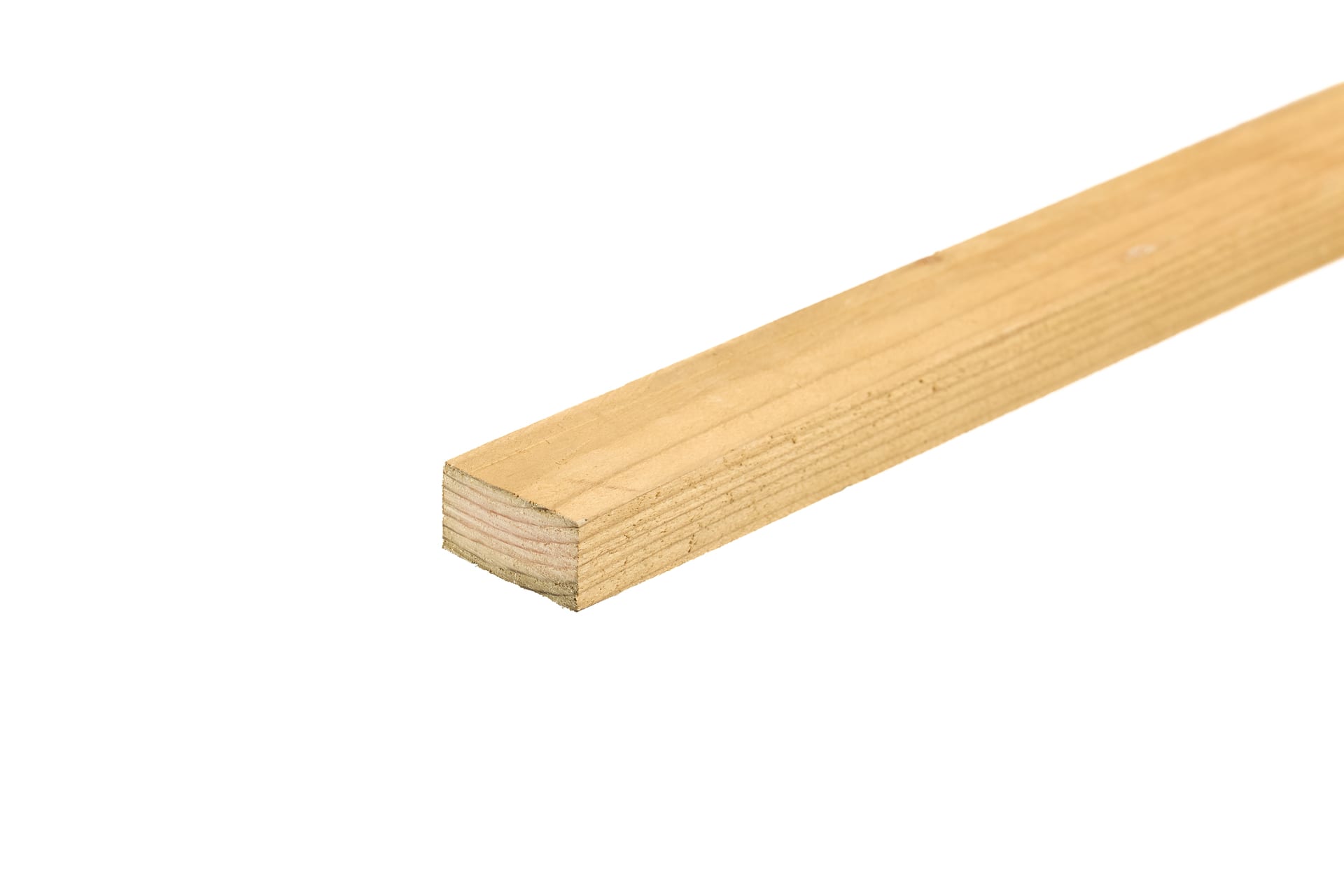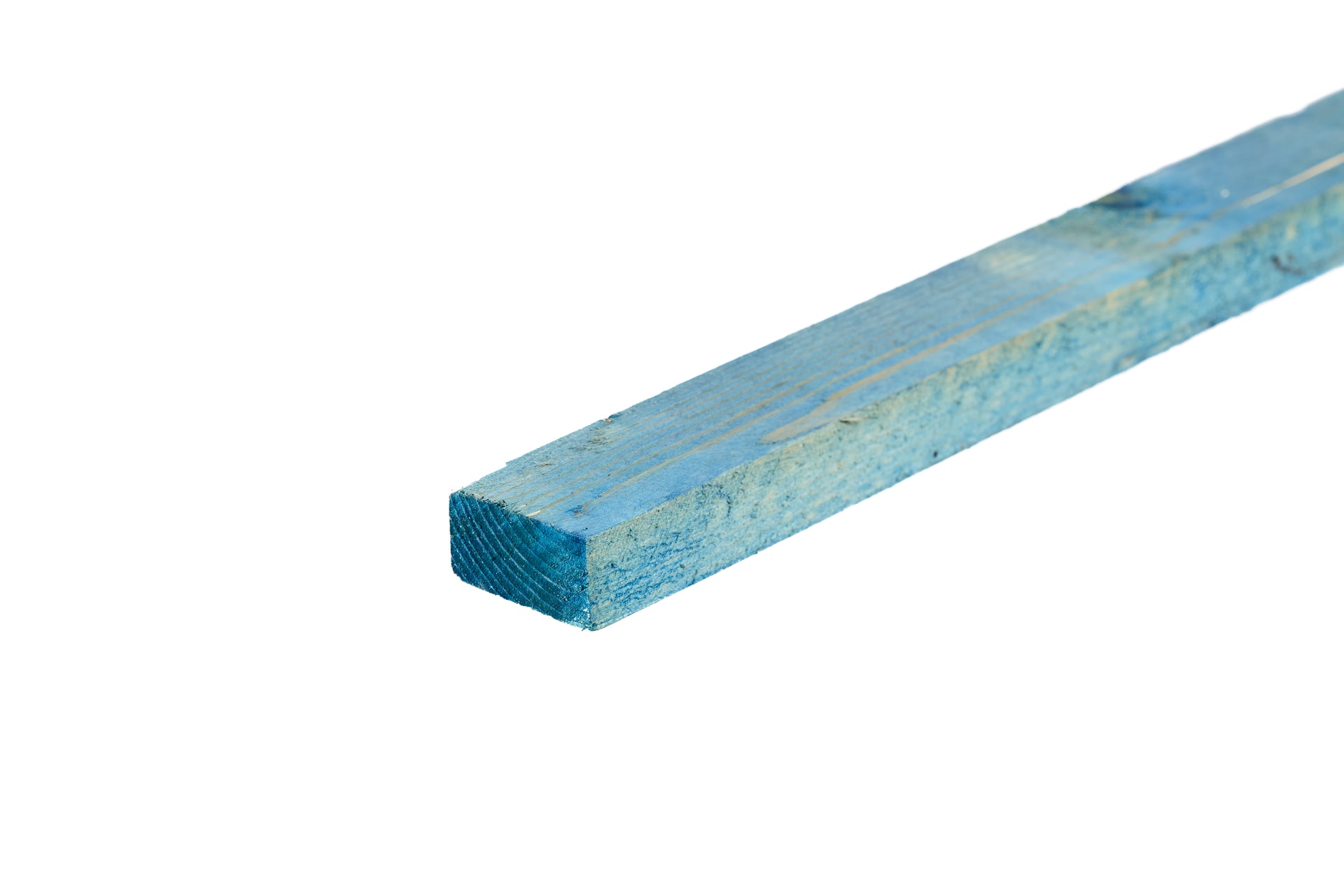2x1 Timber Treated
(6 Products)2x1 treated timber refers to timber that has undergone a treatment process to enhance resistance to decay, insects, and moisture. The "2x1" designation denotes the standard dimensions of the timber, with a width of 2 inches and a thickness of 1 inch. Treated timber is created by impregnating the wood with chemical preservatives, which penetrate the fibres, providing long-lasting protection against various environmental factors.
What is 2x1 Timber Batten?
2x1 timber battens are versatile building materials that offer practical solutions for various construction needs. From creating level surfaces for sheet attachment to spacing between materials, these battens are essential for efficient building practices.
Dimensioned at 2 inches by 1 inch, 2x1 timber batten is primarily utilised to facilitate even surfaces for the installation of plywood, drywall, and other sheet materials.
Additionally, these battens are instrumental in creating gaps for insulation between different construction elements, enhancing both functionality and energy efficiency.
What Is 2x1 Treated Timber Used For?
- Landscaping: It is a popular choice for landscaping projects, including fencing, retaining walls, raised garden beds, and borders.
- Agricultural Use: Treated timber is utilised in agricultural applications like farm fencing, animal enclosures, and stable construction due to its durability and resistance to moisture and pests.
- Construction: It finds application in framing and general construction where strength, durability, and protection against environmental factors are required.
- DIY Projects: 2x1 treated timber is a versatile material for various DIY projects, including furniture making, shelving, and small-scale home renovations.
2x1 Treated Timber Benefits
- Dimension: 2x1 treated timber refers to timber boards that have been cut to a standard size of 2 inches by 1 inch (approximately 50mm x 25mm).
- Treatment Process: Treated timber undergoes a preservation treatment process to enhance its durability and resistance to decay, insects, and fungal growth.
- Pressure Treatment: The most common method for treating timber involves subjecting it to high-pressure treatment with preservative chemicals. This process ensures deeper penetration of the preservatives into the wood fibres, extending their lifespan.
- Availability: 2x1 treated timber is readily available in various lengths, making it suitable for a wide range of applications.
- Durability: Its inherent durability, resistance to moisture, and protection against pests make it a popular choice for outdoor structures and projects where strength and longevity are paramount. What's more, by providing a reliable and evenly spaced framework, good quality 2x1 treated timber battens contribute to the overall structural integrity and longevity of the roof.
2x1 Timber Nominal & Finished Size
Machined from 50x25mm nominal stock size to a finished size of approximately 44x20mm.
2x1 Timber Treatment
Tanalith E is applied to 2x1 timber through a process called pressure treatment. During this process, timber is placed in a closed cylinder, and the Tanalith E solution is forced into the wood under high pressure.
This method ensures deep penetration of the preservative, providing long-lasting protection throughout the entire piece of timber.
Tanalith E is a popular type of wood preservative used in the treatment of timber. It's a water-based solution that includes copper and triazole compounds as active ingredients. This preservative is highly effective at protecting wood from fungal decay, wood rot, and wood-boring insects.
Frequently Asked 2x1 Questions
Can 2x1 Timber Battens Be Used For Load-Bearing Applications?
While 2x1 timber battens are incredibly versatile, they are generally not used for primary load-bearing structures but are excellent for non-structural supportive tasks like framing and creating level surfaces for other materials.
Is It Possible To Paint 2x1 Treated Timber?
It is possible to paint treated timber but it does come with complications due to the treatment process and the chemicals that are normally involved in this. One of the most important things to remember is that it isn’t a good idea to paint it too soon after you have bought it.
This sounds counter-intuitive but it is actually because when shipped, most treated timber is still “wet” and needs time for the water-borne chemicals to settle and dry. You will notice that the wood is heavy and feels damp to the touch at this point.
If primer or paint is added to it at this point, it will most likely be rejected by the water-based chemicals that are still present in the wood. It is important to allow the wood to dry out fully before attempting to add any paint or primer to it. This can take up to a few weeks depending on where the wood is being stored.
Please note that too much heat and direct sunlight can cause the timber to warp rather than dry out and damp conditions can prolong the drying out period.
Is It Easy To Cut 2x1 Timber To My Preferred Size?
It is relatively easy to cut treated timber to the size that you need in your project, though this should only be attempted with the appropriate power tools, eye protection and a respirator as there will be tiny airborne particles of wood, possibly impregnated with the chemicals used in the pressure-treating process.
It cuts similarly to wet wood so care must be taken to ensure the blade doesn’t slip while cutting.
Although it is a little more difficult than cutting sawn timber, it is not massively more difficult to cut 2x1 treated timber into the sizes that are needed for your project. As long as care is taken, it can be accomplished relatively easily. This material is considered versatile for a reason and if it was very difficult, it wouldn’t be used in so many different applications and projects.









